
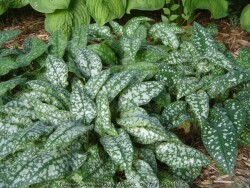
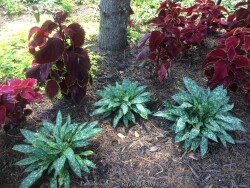
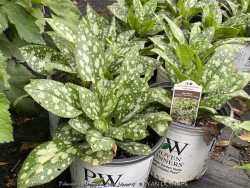
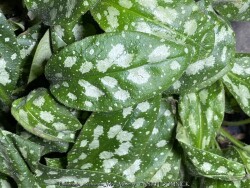
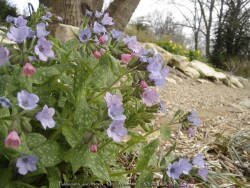
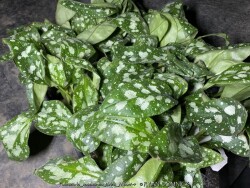

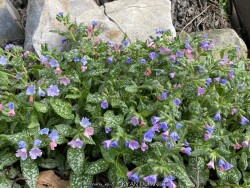
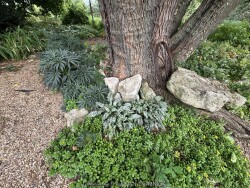
Plant Min Zone: 3a
Plant Max Zone: 7a
Sunlight: Part Sun, Shade
Water / Rainfall: Average
Soil Quality: Average, Rich
Bloom Season: Spring
Flower Color: Blue, Light Purple, Pink, Multi-Colored
Berry / Fruit Color: None
Spring Foliage Color: Green, Silver-Grey, Variegated
Summer Foliage Color: Green, Silver-Grey, Variegated
Fall Foliage Color: Green, Silver-Grey, Variegated
Evergreen Foliage: Some
Winter Interest: Some
Scented Flowers: No
Drought Tolerance: Low, Medium
Wet-Feet Tolerance: Low, Medium
Humidity Tolerance: Medium
Wind Tolerance: Medium
Poor Soil Tolerance: Clay Soils, Alkaline Soils (high PH)
Height: 1' - 1.5'
Width: 1' - 1.5'
Growth Rate: Slow
Service Life: Long: 5-10 years
Maintenance Need: Medium
Spreading Potential: Low
Yearly Trimming Tips: Trim Perennial to Ground in Early Spring before New Growth: Has Winter Interest.
Plant Grouping Size: Specimen Planting of 1-3, Small Grouping of 3-5
Best Side of House: East Exposure, North Exposure
Extreme Planting Locations: Resistant to Rabbits
Ornamental Features: Multiple Seasons of Interest, Exceptional / Colorful Foliage
Special Landscape Uses: None
Possible Pest Problems: Weed Competition
Plant Limitations: Environmental Stress / Decline
Shippable in 2026: YES
Lungwort (Pulmonoria saccharata) is planted for its unusual evergreen spekled white and green foliage. Foliage maintains well all summer provided that basic cultural conditions are met. Late spring flowers are a bright and colorful mix of blue, purple, and pink on the same plant changing colors as they age. Flowering last about 3-4 weeks and requires no dead-heading as new foliage swallows up dying flower stalks. Native to Europe, it slowly colonizes forests in humusy, medium well-drained soil in part shade to full shade. It can handle a little Kansas drought in in moisture-retentive soils but not full-on dry-shade. Foliage will flatten to the ground during drought then spring back up when moisture is available again. If low temperatures hit 0 degrees F, foliage finally dies back to the ground and re-emerges in early spring. Generally this plant holds its own in Kansas climates but fails to spread much. Leaves can depreciate considerably in extremely hot weather and/or too much sun, particularly if soils are allowed to dry out. Root rot may occur in wet, poorly drained soils. It is worth a try if you have a small spot to fill in a well-tended shade gardens.